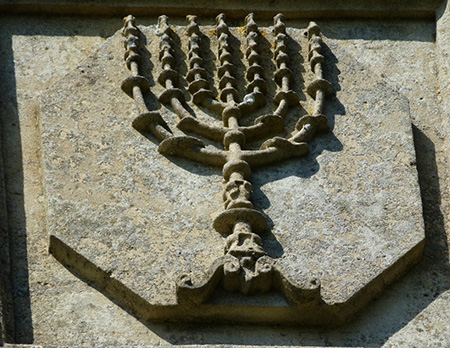Religious Rabbits
/Rushton Triangular Lodge
Following on from last month on the subject of rabbits, one of the most intriguing buildings associated with pillow mounds is the Rushton Triangular Lodge in Northamptonshire. It was built between 1593 and 1595 by Sir Thomas Tresham and features in his accounts as a Warrener’s Lodge or Connegerie Lodge. Connegerie or Coneygarth being the old term for rabbit warren.
Sir Thomas, although fiercely loyal to Queen Elizabeth I, was a recusant Catholic and as such was imprisoned and fined on many occasions. He found ways of expressing his deeply held Catholic beliefs in the symbolism of his buildings. The Elizabethan court loved intellectual puzzles – ‘devices’ – where more than one idea was expressed in such a way as to make the observer struggle for the correct interpretation. At the Lodge he was so successful that even today its full meaning is subject to debate and conjecture.
The building is a play on the number three – the triangle and the trefoil are symbols of the three-in-one Holy Trinity of God, Jesus and the Holy Spirit, but also a play on Tresham’s own name and coat of arms. His wife referred to him as Tres and his emblem was a boar’s head with a trefoil in its mouth.
Carved Panel
Each side of the three-sided Lodge is 33 feet long (Christ’s age when he died); each of the three floors has three windows and three gables. The windows are a complex mixture of triangles and trefoils on the top and basement levels with crosses and circles on the middle floor. The gables have three panels with a sun dial on each of the three sides, but the other panels hold carved religious symbols such as the 7 branched candlestick which may represent the seven lamps of fire burning before the throne of God and mentioned in the Book of Revelation.
Inside the Lodge is very plain; the basement is partially below ground with small windows and so would have been an excellent storage space for the dead rabbits before they went to market. Tresham made a good profit on his rabbits – the grey sold for £3 per hundred; the black for £5 and the black and white ‘rich’ rabbits for £10 per hundred. These rabbits were valued for their meat and fur, used as trimming for rich garments. The middle floor is probably where the Warrener slept while guarding the rabbits and the top floor, which is the only one with a fireplace, may have been used by Tresham to entertain his guests as a Banqueting House or to pray and meditate alone.
There are many inscriptions on the outside, some of which have been satisfactorily deciphered, but if you want to visit yourself and try your hand the Lodge is open to the public. It is administered by English Heritage and is usually open in the summer months although closed on Mondays and Tuesdays. It is in the grounds of Rushton Hall which is now a delightful hotel which does excellent lunches and afternoon tea. If you ask, the staff will usually let Garden Historians view Tresham’s Oratory featuring a plaster panel of the Crucifixion dated 1577.



